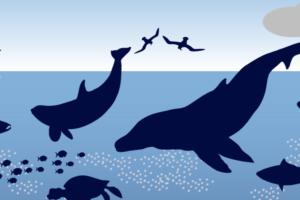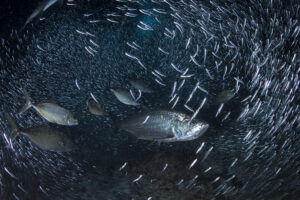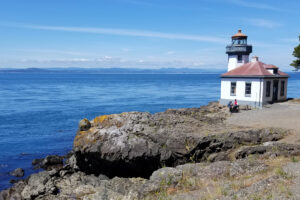In case you didn’t know, the Southern Resident Killer Whales (SRKWs) are on the Endangered Species list. They are on it for a reason. According to the Center for Whale Research, as of December 2019, there are only 73 of them left.1 The Salish Sea has been deemed critical habitat for these orcas. They come in the summer months to hunt Chinook salmon that are making their way back into the river systems here to spawn. During the other months of the year, they swim along the Pacific coast of British Columbia, Washington, Oregon, and California looking for fish. These US waters also include the US Navy’s Northwest Training and Testing (NWTT) Study Area.

Permission to kill and injure
The US Navy has formally requested an exemption under the Marine Mammal Protection Act for the “incidental take” of as many as 51 whales and hundreds of thousands of other marine mammals during training exercises and testing activities that they want to conduct over the next seven years in the waters outside the Strait of Juan de Fuca and in the Salish Sea.
What does “incidental take” mean? According to NOAA Fisheries:
“Take as defined under the Marine Mammal Protection Act (MMPA) means “to harass, hunt, capture, or kill, or attempt to harass, hunt, capture, or kill any marine mammal.”2 Incidental means that the take is unintentional, but not unexpected.
What training and testing does the US Navy want to conduct? According to NOAA Fisheries:
“Anti-submarine warfare (sonar and other transducers, underwater detonations), mine warfare (sonar and other transducers, underwater detonations), surface warfare (underwater detonations), and other testing and training (sonar and other transducers).”3
Find another place
I understand the need for the US Navy to conduct realistic training exercises. I do. My Dad served in the US Army in Korea. Proper training enables readiness and effective response. It protects the lives of Navy sailors and by extension, it protects us. However, the Southern Resident Killer Whales are formally ENDANGERED. Incidentally harming 51 out of 73 whales will make the SRKWs functionally extinct. Their population cannot afford any loss to the US Navy’s training activity.
According to NOAA:
“The U.S. exclusive economic zone (EEZ) is the largest in the world, spanning over 13,000 miles of coastline and containing 3.4 million square nautical miles of ocean—larger than the combined land area of all fifty states.”4
It would be great if the US Navy would select another place within that vast range of ocean to conduct training and testing that they already know will harm endangered marine animals.
The National Marine Fisheries Service (NMFS) and National Oceanic and Atmospheric Administration (NOAA) requested formal public comments on the proposal by July 17, 2020. 29 conservation organizations have already joined together to voice opposition to the US Navy’s request.
Take Action
It may be after July 17th, but you can still add your voice. If you support denying the US Navy’s request,
- Go to Change.org to sign the petition.
- Use this template prepared by the Coextinctionfilm.com team to send a letter directly to the Office of Protected Resources National Marine Fisheries Service.
For more information on the US Navy’s request and the expected impact on marine mammals, check out this summary from Wild Orca or the full proposal posted by NOAA Fisheries.
Go Deeper!
Go Deeper to explore the ocean and the Salish Sea through a curated list of articles, books, films, and other resources.
To learn more about the topic in this article, check out the following resources:
- The Center for Whale Research
- NOAA Fisheries Laws & Policies
- NOAA National Ocean Service. What is the EEZ?
End Notes
1 “Orcas Population.” Center for Whale Research, 2020. https://www.whaleresearch.com/orca-population.
2-3 “Taking and Importing Marine Mammals; Taking Marine Mammals Incidental to the U.S. Navy Training and Testing Activities in the Northwest Training and Testing (NWTT) Study Area.” Federal Register. National Marine Fisheries Service (NMFS), National Oceanic and Atmospheric Administration (NOAA), Commerce, June 2, 2020. https://www.federalregister.gov/documents/2020/06/02/2020-08533/taking-and-importing-marine-mammals-taking-marine-mammals-incidental-to-the-us-navy-training-and.
4 “THE UNITED STATES IS AN OCEAN NATION.” NOAA, January 27, 2011. https://www.gc.noaa.gov/documents/2011/012711_gcil_maritime_eez_map.pdf.






Leave a Reply
Your comments are welcome.